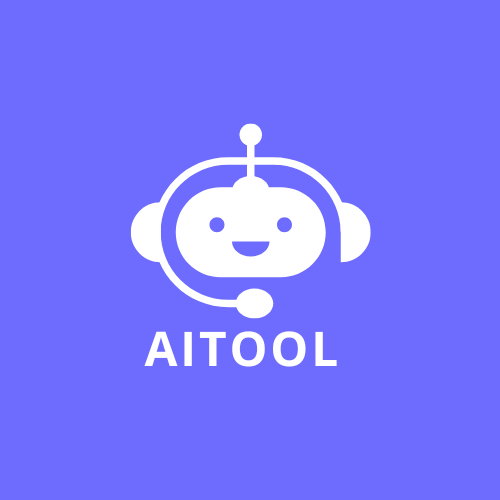Artificial Intelligence (AI) has become an integral part of many industries, from healthcare to finance to transportation. At the heart of AI lies machine learning, a process that relies on data to train algorithms to automate tasks and make predictions. However, for machine learning to be successful, the data needs to be labeled or annotated to provide context and structure. This is where AI annotation comes in, and in this article, we’ll explore what AI annotation is, its importance in machine learning, and its various techniques and tools.

The Basics of AI Annotation
What is AI Annotation?
AI annotation, also known as data labeling, is the process of tagging data to provide context and structure for machine learning algorithms. The data can come in various forms such as text, images, videos, or audio, and the annotations can include attributes such as categories, subcategories, and sentiment. The annotations help the algorithm understand patterns, recognize objects, and make decisions in real-life situations.
AI annotation is a crucial step in the development of machine learning models. It involves human annotators who manually label data to provide context and structure for the algorithms. The process can be time-consuming and requires a high level of accuracy to ensure that the labeled data is correct and consistent.

The Importance of AI Annotation in Machine Learning
AI annotation plays a critical role in the success of machine learning models. Without labeled data, the algorithms cannot learn and make predictions accurately. Machine learning models used in autonomous vehicles, natural language processing, and image and speech recognition, for example, require billions of labeled data points to perform optimally. Imagine trying to train a machine learning model to recognize a cat without any labeled data. It would be impossible.
AI annotation also enables machine learning models to adapt to changing environments and situations. As new data is labeled and added to the model, it can improve its accuracy and performance. This is particularly important in industries such as healthcare and finance, where accuracy and precision are crucial.
Furthermore, AI annotation can help to reduce bias in machine learning models. By ensuring that the labeled data is diverse and representative, the algorithms can make more accurate predictions and avoid perpetuating existing biases.
In conclusion, AI annotation is a crucial step in the development of machine learning models. It enables algorithms to learn and make predictions accurately, adapt to changing situations, and reduce bias. As the demand for machine learning continues to grow, so too does the importance of AI annotation.

Types of AI Annotation Techniques
Artificial Intelligence (AI) has revolutionized the way we process and analyze data. AI annotation techniques play a crucial role in training machine learning models to recognize patterns and make accurate predictions. Let’s take a closer look at some of the most commonly used AI annotation techniques:
Text Annotation
Text annotation involves labeling text data with tags that provide context and meaning. This technique is commonly used for sentiment analysis, topic modeling, and text classification. Sentiment analysis is used to determine the emotional tone of a piece of text, whether it is positive, negative, or neutral. Topic modeling is used to identify the main themes and topics in a large corpus of text, while text classification is used to categorize text into predefined classes.
Image Annotation
Image annotation involves labeling images with tags that describe the contents of the image. This technique is used in various industries, including e-commerce, healthcare, and self-driving cars. In e-commerce, images are labeled with product attributes such as color, size, and brand, which helps customers to search for and find the products they are looking for. In healthcare, medical images are labeled with anatomical structures and abnormalities, which helps doctors to make accurate diagnoses. Self-driving cars use image annotation to identify objects such as pedestrians, traffic lights, and road signs.
Video Annotation
Video annotation involves labeling videos with tags that describe the contents of the video. This technique is used in self-driving cars, sports analysis, and security surveillance systems. In self-driving cars, video annotation is used to identify objects and obstacles on the road, and to track the movements of other vehicles. In sports analysis, videos are labeled with player statistics such as speed, distance, and direction, which helps coaches and players to analyze and improve their performance. In security surveillance systems, video annotation is used to detect and track suspicious behavior.
Audio Annotation
Audio annotation involves labeling audio files with tags that describe the contents of the audio. This technique is used in speech recognition, music classification, and language translation. In speech recognition, audio files are labeled with the text transcript of the speech, which helps the machine learning model to recognize and transcribe speech accurately. In music classification, audio files are labeled with the genre, tempo, and other musical features, which helps to categorize and organize music. In language translation, audio files are labeled with the translated text, which helps to train machine learning models to translate speech from one language to another.
Overall, AI annotation techniques play a critical role in the development of machine learning models that can accurately analyze and interpret complex data. These techniques are used in a wide range of industries, from e-commerce and healthcare to self-driving cars and security surveillance systems.
AI Annotation Tools and Platforms

Open-Source AI Annotation Tools
There are several open-source AI annotation tools available, including Labelbox, Supervisely, and VGG Image Annotator. These tools provide a customizable user interface, automated annotation tools, and collaboration features.
Commercial AI Annotation Platforms
There are also several commercial AI annotation platforms available, including Amazon Mechanical Turk, CrowdFlower, and Appen. These platforms provide access to a large pool of human annotators, automated annotation tools, and quality control features.
The AI Annotation Process
Data Collection and Preparation
The first step in the AI annotation process is to collect and prepare the data. The data needs to be relevant, diverse, and representative of the real-world scenarios that the machine learning model will be trained on. The data also needs to be cleaned and preprocessed to remove noise and inconsistencies.
Annotation Guidelines and Quality Control
The next step is to develop annotation guidelines that provide clear instructions to the annotators on how to label the data. The guidelines need to be consistent, accurate, and comprehensive to ensure that the labeled data is of high quality. Quality control mechanisms, such as inter-annotator agreement and spot checks, are also used to ensure the accuracy and consistency of the labeled data.
The Role of Human Annotators
Human annotators play a crucial role in the AI annotation process. They are responsible for labeling the data accurately and consistently according to the annotation guidelines. The annotators need to be trained, monitored, and incentivized to ensure that they perform their tasks effectively. Crowdsourcing platforms are often used to access a large pool of annotators from around the world.
Post-Annotation Analysis and Model Training
After the data has been labeled, it needs to be analyzed and formatted to prepare it for model training. The labeled data is split into training, validation, and testing sets, and the machine learning model is trained using various algorithms and techniques. The model is then tested for accuracy and optimized through a process of trial and error.
Conclusion
AI annotation is an essential component of machine learning, enabling algorithms to learn and make predictions accurately. The technique involves labeling data with tags that provide context and meaning, and there are several tools and platforms available to support the process. Developing comprehensive annotation guidelines and quality control mechanisms is critical in ensuring the accuracy and consistency of the labeled data, and human annotators play a crucial role in the process. The future of AI annotation looks promising, with new techniques and tools emerging to support the ever-increasing demand for labeled data.


